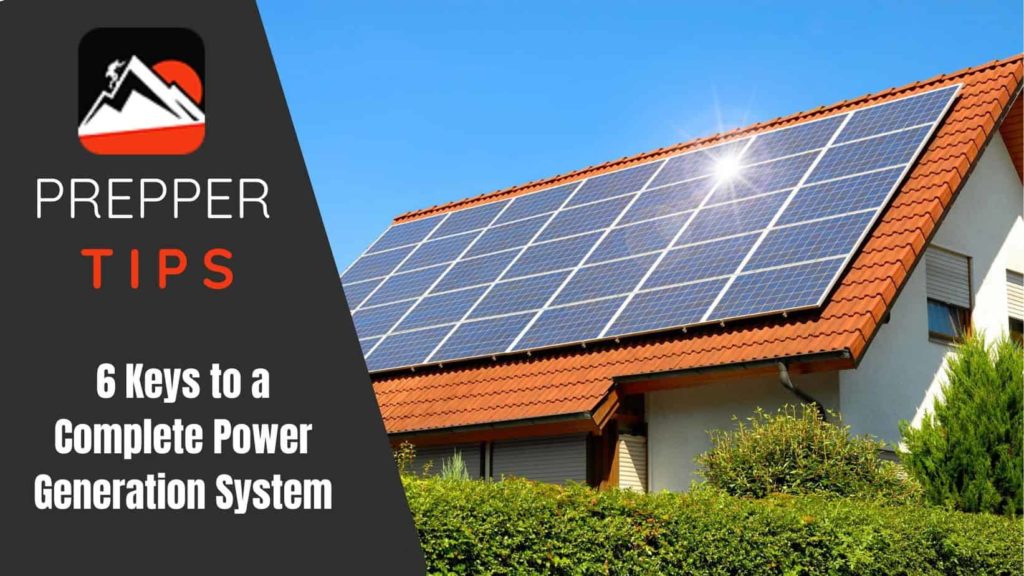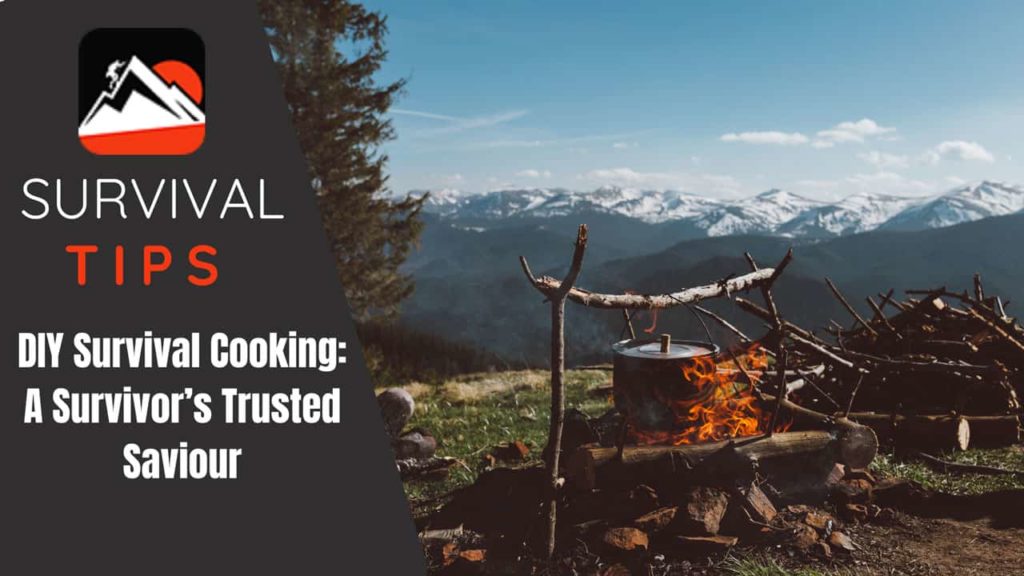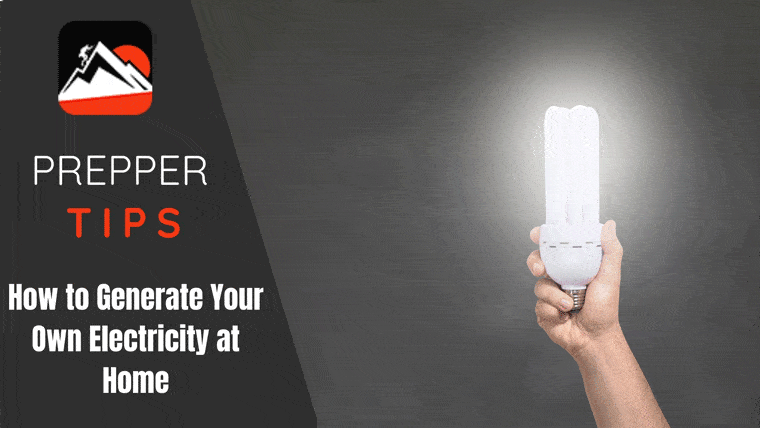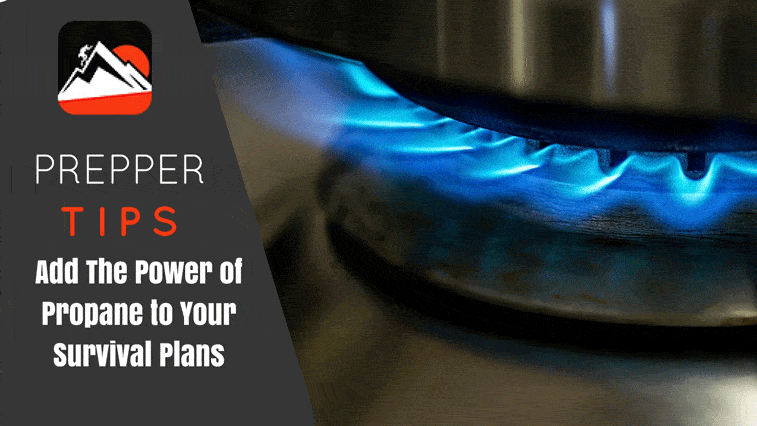Contents
It is fair to say our world is about motion. When things move, they can also be used to make electricity. You would think making power at home would be easy.
Sadly, most people that want to make power at home don’t follow through. Once they make a few volts, they don’t make a full system. If you are serious about free energy, there are 6 key things you must take into account.
Capture a Source of Power
In physics, power can be defined as the ability to do work. To generate electricity, you will need to start by making an object move.
Usually, the object is some kind of blade. For example, wind and water make turbine blades move. Heat can also be used to make steam. The steam, in turn, can be used to push a piston or some other object.
Here are some sources of power you can use to make an object move:
Solar – Heat from the sun can be used to boil water and make steam. From there, you can make a small steam engine.
There is a way to use light or photons from the sun. You will need special materials made from rare earth elements. When a photon hits these atoms, it knocks electrons loose from the atom.

As you will recall, the motion of electrons is what we call electricity.
Even though you can buy solar panels, they have a lot of problems. To begin with, bad ones can catch fire. Other than that, the United States lost its rare earth processing industry. This happened because China undersold to our market. Now, we are dependent on China for the key part of solar panels.
On the other hand, there are many ways to make steam. None of them require complex elements. You can build a system on your own from many things.
Wind – As I said earlier, the wind is used to turn turbine blades. The more the blades turn, the more power you will have.
To get the most from a wind turbine, you need to make sure the blades are very light. They also have to be in the right shape.

You might also find interesting our article about generating electricity at home.
Some new models may surprise you. They don’t look at all like an old-style windmill. The best designs look like a spiral.
Other designs wrap a band around the blades so that wind is directed back into the blades. These models are 30% or more efficient than older designs.
Water – a water wheel, or a water turbine also makes use of blades. As long as the water is moving and hits the blades, you will have a source of power.

Contrary to popular belief, you can make the blades very small. The turbine will still generate power. The blades can fit into pipes and even in drains as long as the water can flow through without making a build-up of gunk.
Biomass – biomass is usually used to make fuel. Methane and biodiesel are two kinds of fuel you can make. The fuel, in turn, can be used to make steam.

Earth Battery – If you bury two different kinds of metal, they will generate power. You can do the same thing with saltwater.

We also recommend reading our article about how to prepare your homestead for a grid down disaster.
Nikola Tesla and Other Methods – There are many ways to make an object move. A Tesla Turbine is more efficient than any other kind. After building one, though, I can tell you it isn’t as easy as it looks.

There are other ways you can explore such as pedaling a stationary bike or just walking. Right now these methods may not make much power. But if you harness them right and combine them, it may be better than relying on one source of power.
Generate an Electrical Current
Motion alone is not enough to make electricity. You will need metal wire and magnets to do the job. When a magnet or wire moves with each other, electrons move along the wire. The more wire you have, the more electrons get moved.
If you wind the wire into a coil, the entire coil will make electricity. Some coil shapes work better than others. There is also a lot of difference in how much electricity you can get from each metal type.

For now, your cheapest and best option is copper wire coils. You can wind your own coils, or buy them pre-wound. If you decide to make your own coils, it is best to also make a coil winder. This will make the coils more even and thus more reliable.
To get the most electricity, either the magnet or the wire will have to stay still while the other moves. In modern motors, the magnet stays still, while the coil moves around it.
This setup will produce the most power. The problem is a motor can be a very delicate device. If the coil is not even and balanced, the bearings in the motor will wear out and stop working.
On the other hand, making a perfect coil is very hard unless you have commercial winders. This is one reason why I always say you are better off making magnets move instead of the coil. For example, if you attach magnets to bike spokes, balancing them is very easy.
The other reason is you can also put a lot of coils near the magnets and generate power in all of them. No matter whether you build a wind turbine or a steam engine, small scale devices can add up.
This key step is where most people stop. Here’s why:
- it is not too hard to get or make a small coil of wire. The only problem is that even these can be expensive.
It takes big coils to make enough power to run a standard home appliance. As I said earlier, trying to wind a coil on your own is hard. Once the copper is wound wrong, you will have a hard time fixing it. First, you would have to unwind the coil back to the mistake.
Second, once the coil wire is bent, it is hard to make it straight again. That being said, you be able to get around this with a good quality coil winder.
To get through this stage, you have to commit to making the best coils. It will take time and money to win this goal. Here are some ways you can try to cut the cost:
- look for old fashioned motors. The older they are, the better. The coils in them may still be in good shape. All you have to do is figure out how to get them to make power instead of using it. Some very old motors are reversible in this sense.
- You can also buy a magnet wire and a coil making machine. Or, you can make your own winder. There are many DIY plans online. Some are simple hand crank designs. Others use power screwdrivers. You will even find ones that use Arduino controllers to manage the winding.
- Before you settle on a coil winder, think about the coil shape. Right now there are only a few videos and sites about complex coils. Look into Toroid and Rodin, and Russel coils.
You may have to start with a normal coil, and then feed the power into one of these. If the sites and videos are right, you will get a lot more power.
Use a Joule Thief to Amplify the Current
Let’s say you can make 1 volt of electricity. Now let’s also say you need 12 volts. A joule thief will gather up each volt that you make. Once it has 12 volts, it will send it along to the next place in the circuit.
Most people use a joule thief to get more out of batteries. For example, you may have 2 batteries that have .5 volts each. If you try to power a device that needs 1 volt, neither of them will work. If you use a joule thief, it will drain the .5 volts from each battery. This will be enough to power the device.

Here are some places where you can use a joule thief:
- After the coils make electricity. Adding up the volts can charge a battery faster. Just remember not to go over the amount the battery can take at one time.
- In a system with more than one battery. The joule thief can help you deep cycle batteries that need it. You will also get more out of every charge.
- Any place in the system where you need a stable current flow.
- Any place in the system where you need more power than stored in a battery.
It is not hard to make a joule thief. Most people don’t make one because they give up at the coil level. Other people don’t use joule thieves because they need a transistor. As you know, these devices can be ruined by an EMP.
To get past this level, you should at least build one small joule thief. This will give you an idea of how it works and why you need it. From there, you will need to figure out how to build a transistor that is not solid state.
Some people would think about using vacuum tubes. The problem is these take a lot of power to run. It is better to look for natural materials that can work together as a transistor. Just be sure to avoid semi-conductors.
Store the Electricity
A lot of people that get to the coiling stage skip straight to storing power. This part is easy but not cheap. All you need are batteries.
You can also use capacitors to store power. The problem is they do not put out power for very long.
It would take a lot of capacitors to get what you get from a battery. That said, you can also make capacitors from paper. This takes away problems related to solid-state things. They are also very cheap to make.
Other than cost, batteries don’t last for long. This is one reason why electric cars aren’t more popular.
For home power, you will need a reliable battery. It must be able to give a steady amount of power even under heavy loads. There are three main types to choose from:
- Edison Battery – this is a Nickel – Iron battery. They have been in use for a very long time. Some say they are not as reliable as they should be. Others will not use anything else in their home power system.
- Lithium-Ion Battery – There are many models on the market. Most cost a lot of money. They can also be a fire hazard.
- Deep Cycle Battery – Used in boats and RVs. They are sturdier than a regular car battery and will last longer.
There are also some new battery ideas. Some are better than others. Here are a few to keep an eye on.
- Graphene Battery – Right now you can buy small power packs. Price is high, but coming down.
Their main advantage is they charge up very fast. It also takes very little power. With a graphene battery, you might be able to get reliable power for your phone and small devices.
- Ryden or Cambrian Battery – This is a carbon-based battery made in Japan. Some devices use it, such as scooters. I have followed this one for a few years now. Of all the batteries, this one still holds a lot of promise. It may take a few more years before you can buy one.



Invert and Regulate the Electricity
There are two parts to regulating electricity. Up until this point, you will be making and storing DC or Direct Current. You need to know the difference between this and AC or Alternating Current.
Think of a sine wave with a line through the center. The line in the center is how direct current moves. It only goes in one direction.
Alternating current is like the sine wave. It will flow in one direction and then reverse itself. It can go slower or faster, and also be big or small.
When you build a coil, it has to make DC. There is no way to store AC.
On the other hand, it is very easy to move AC through a power line. It is also better for running motors. As a result, you will have to convert from DC to AC. This is known as inversion.
You can buy a power inverter. There are also many plans online that show you how to build one.
Modern inverters also need solid-state parts. At some point, you will need to look into ways to get around that. Some old ways use a series of coils called a rotary converter.
As with the Joule Thief, you can still get started with a solid-state device. At least you will know how the circuit works. From there it will be easier to figure out how to get rid of things that can be ruined by an EMP attack.
System Safety Features
Some people tell you that solar and wind power are safer than fossil fuels. These people don’t tell you about all the home solar panels that catch fire.
They also don’t tell you about big solar panels in the desert. Keeping them cool takes a lot of water. That still doesn’t stop them from frying birds alive that fly over them.
Wind turbines are not safe either. The noise from them is a kind of pollution. People and animals get sick from it. Wind turbines also kill birds that fly into them.
Every part of a power generating system can be dangerous. Here are just a few things you need to watch for.
- Fire – There is always a chance of fire. You will have to build on cement pads. Coils, batteries, and other parts can also make a lot of heat.
Things that are nearby can always catch fire. A flame or spark is not needed. If a thing is at its kindling point, it will go on fire.
- Explosions – If you are using steam, there is a chance the vessel will explode. Valves, gages, and the vessel will wear with time. You can also make mistakes when putting things together.
- Any time a liquid or gas is under pressure, there is a chance it will explode. Before you create this kind of system, do your research carefully. Get advice from licensed people that have built similar systems.
- This problem can also happen with batteries. Overcharging batteries can cause them to heat up. When that happens, the chemicals inside may cause an explosion. Some kinds of worn batteries can also have this problem.
- Shock – Many people think DC can’t kill you. The fact is it is more dangerous than AC. It is very important to have the right tools and facts.
Before you even start planning a system, read a book on electricity and circuits. Talk to a licensed electrician also. Make sure that you understand the facts and how to use them.
- Injuries – All machines wear out. When that happens, they can fall apart. An item in motion will stay in motion. A turbine blade that breaks away will fly far. It can hurt you or others.



As I said earlier, wind turbines carry some extra danger. The bigger the blades, the worse it is. Look for smaller, more compact designs. Be ready to put screens all around the turbine.
This is the only way to keep flying things from hitting the blades. The screens have to be outside of the wind tunnel made by the turbine. Depending on the design, this could be a few feet.
Birds and insects can get drawn in and killed. This is also not good for the device.
Over the years, we have come to rely on computers. Sensors can do a lot to shut off things that aren’t working right. They can also help with the amount of energy flow.
Sensors can’t take the place of common sense. They also can’t take the place of good facts and understanding those facts. It is hard to know what is right and wrong in this arena if you don’t have good facts. You also need practice.
Some people are under the illusion that they have an “instinct” for devices. Building a power system isn’t like gardening.
Instinct is a gift you are born with. You can say that comes from God. Plants were made by God. Devices are made by humans. You need books and other people to guide you to make safe devices.
Once you know the basics, it is fine to experiment. Don’t forget the basic rules and how to stay safe.
Conclusion
As you can see, there is a lot of work to do if you want free power. Most people think finding a source of energy is hard. In reality, the hard part is turning that energy into true power. You can spin a turbine blade with ease. But turning that spin into usable electricity is another matter.





